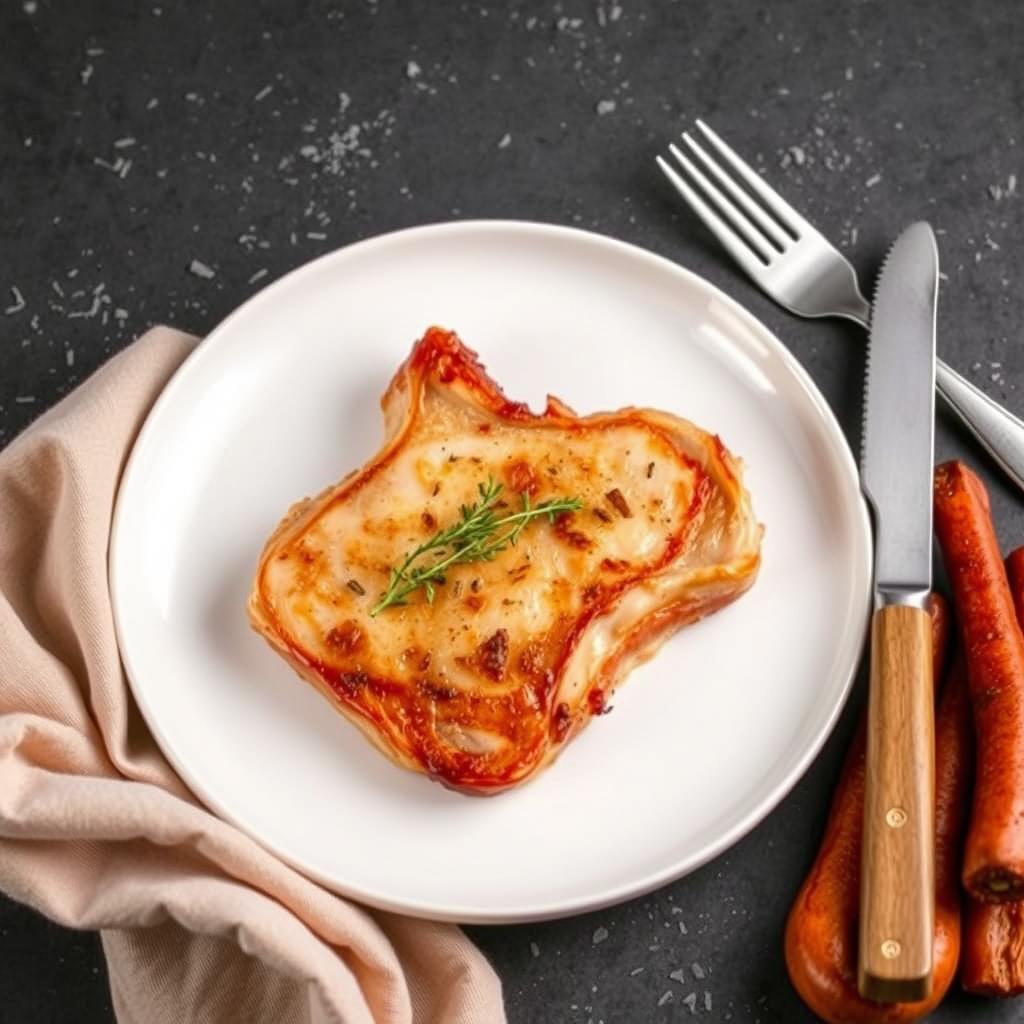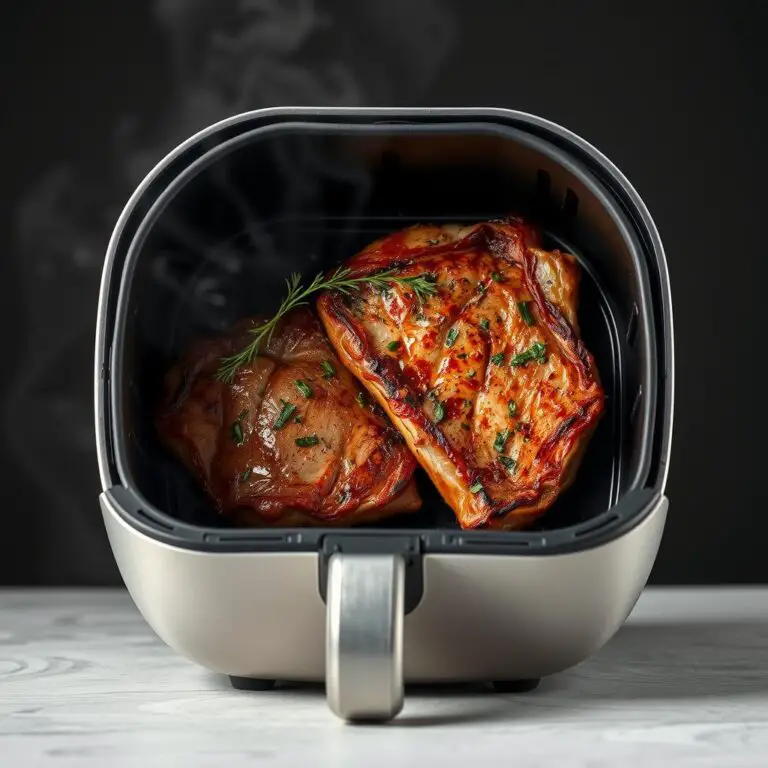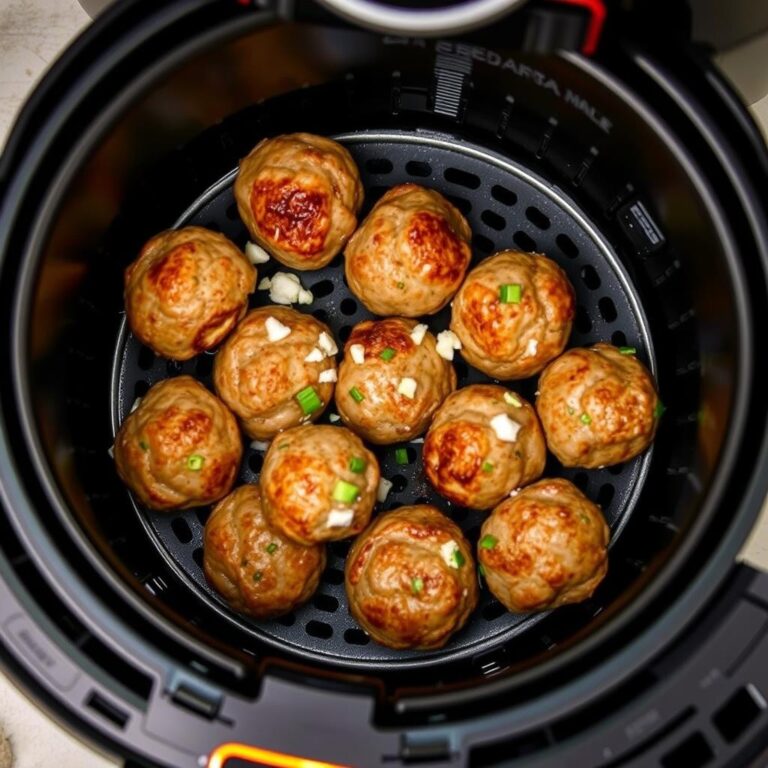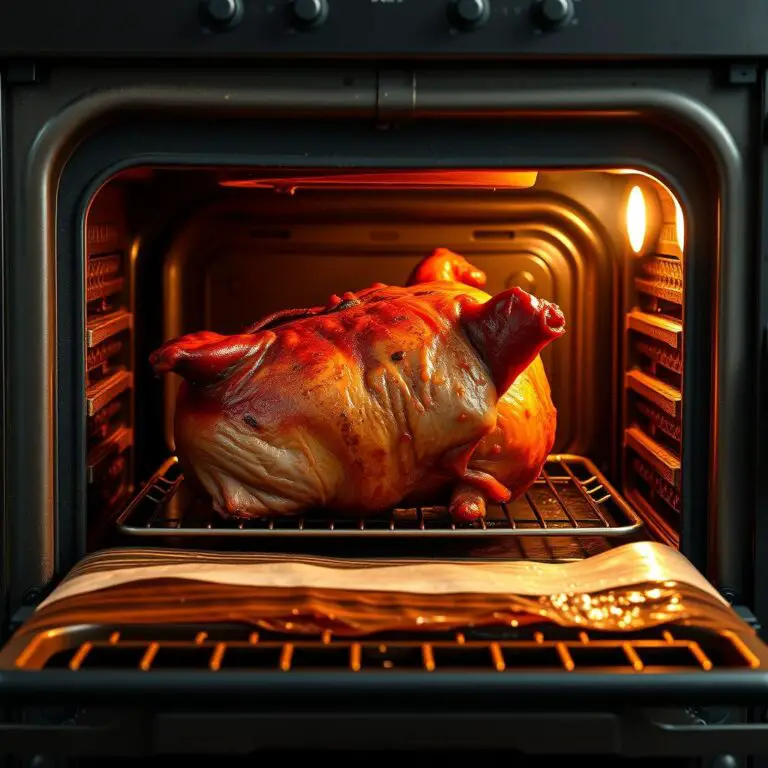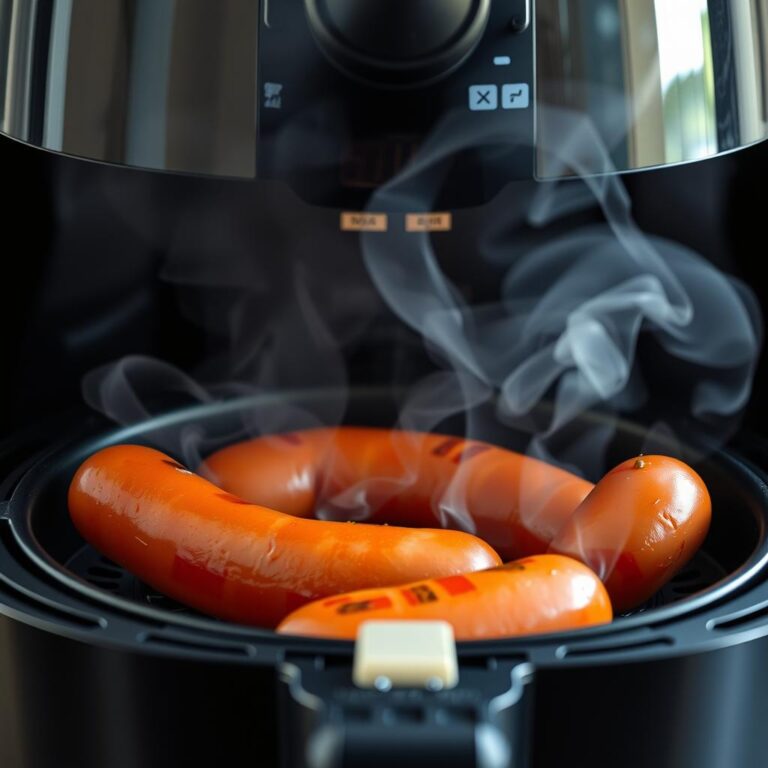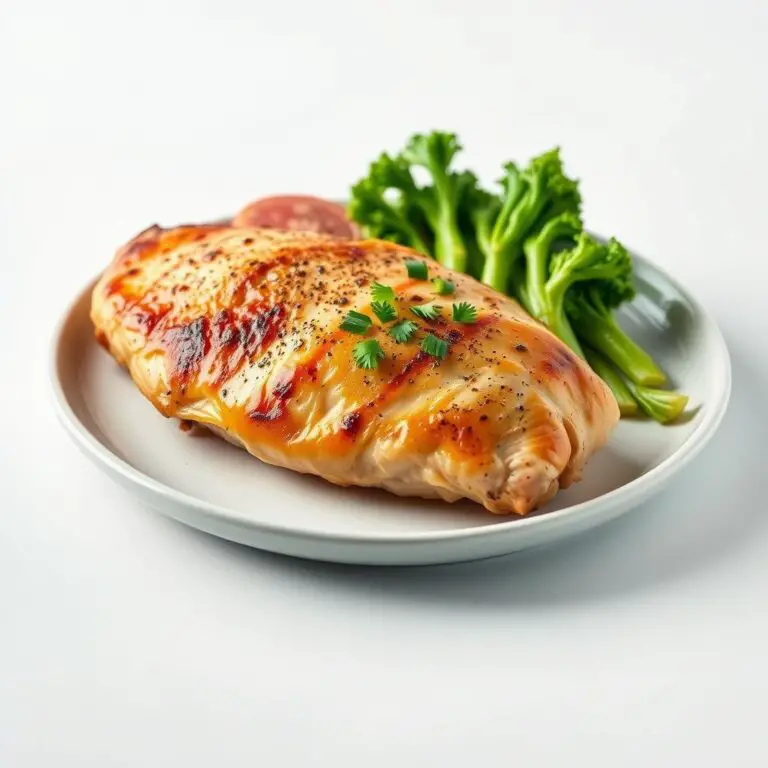Okay, let's break down the best way to cook thin pork chops, no fluff, straight to the point.
What Is The Best Way To Cook Thin Pork Chops?
You're staring at those thin pork chops, wondering how to make them juicy, not tough as shoe leather, right?
I get it.
Thin pork chops can be tricky.
One minute they're raw, the next they're hockey pucks, but I'm here to tell you the best way to cook thin pork chops so they're delicious every single time.
This article is going to give you some game-changing info.
The Thin Pork Chop Dilemma: Avoiding Dryness
The biggest challenge with thin pork chops is overcooking.
Because they're thin, they cook fast.
Really fast.
This is why achieving that tender, juicy inside is a constant battle.
Think about it: the internal temperature rises rapidly, and bam, you've got dry, flavorless pork.
No one wants that.
Key Factors For Cooking Thin Pork Chops Perfectly
- Thickness Matters: We're talking thin chops, so adjust your cooking time accordingly. Thicker chops need more time, obviously.
- The Right Cut: Look for cuts like boneless loin chops or center-cut chops. They tend to be leaner and cook more evenly.
- Mastering the Marinade: Marinades are your best friend. They add moisture and flavor, combating dryness.
- Temperature Control: High heat can be tempting, but medium heat is the key to even cooking.
- Resting is Crucial: Letting the pork rest allows the juices to redistribute, resulting in a more tender chop.
Brining or Marinating: Your First Line of Defense
Before you even think about turning on the stove, consider brining or marinating your thin pork chops.
These techniques infuse the meat with moisture and flavor, setting you up for success.
Brining: Submerge the pork chops in a saltwater solution for about 30 minutes to an hour.
This process helps the meat retain moisture during cooking.
Marinating: A good marinade typically includes an acid (like vinegar or lemon juice), oil, and seasonings.
Marinate for at least 30 minutes, or up to several hours in the refrigerator.
Think about using apple cider vinegar, soy sauce, garlic powder, and a touch of brown sugar for a flavorful marinade.
Essential Cooking Methods For Thin Pork Chops
Let's dive into cooking methods.
Pan-searing and grilling are two popular options, but each requires a slightly different approach for thin pork chops.
Pan-Searing:
- Pat the pork chops dry with paper towels. This helps them get a good sear.
- Heat a skillet over medium heat with a tablespoon of oil (vegetable oil or olive oil works well).
- Once the pan is hot, add the pork chops, being careful not to overcrowd the pan.
- Cook for 2-3 minutes per side, or until the internal temperature reaches 145°F (63°C). Use a meat thermometer for accuracy.
- Remove from the pan and let rest for 5 minutes before serving.
Grilling:
- Preheat your grill to medium heat.
- Lightly oil the grill grates to prevent sticking.
- Grill the pork chops for 2-3 minutes per side, or until the internal temperature reaches 145°F (63°C).
- Let rest for 5 minutes before serving.
Why a Meat Thermometer is Your New Best Friend
Seriously, get yourself a meat thermometer.
It takes the guesswork out of cooking and ensures your pork chops are cooked to perfection every time.
Insert the thermometer into the thickest part of the chop, avoiding the bone.
Aim for an internal temperature of 145°F (63°C).
The resting period will allow the temperature to rise slightly, ensuring a juicy, safe-to-eat pork chop.
Seasoning Secrets and Flavor Boosters
Don't underestimate the power of seasoning.
A simple salt and pepper rub can go a long way, but feel free to get creative.
Garlic powder, onion powder, paprika, and herbs like thyme or rosemary are all great additions.
Experiment and find your favorite flavor combinations.
Also, consider a finishing sauce.
A simple pan sauce made with butter, garlic, and lemon juice can elevate your pork chops to the next level.
Resting: The Unsung Hero of Juicy Pork Chops
I can't stress this enough: resting is crucial.
After cooking, transfer the pork chops to a cutting board and tent them loosely with foil.
Let them rest for at least 5 minutes before slicing and serving.
This allows the juices to redistribute throughout the meat, resulting in a more tender and flavorful chop.
Skipping this step is a common mistake that leads to dry pork.
Serving Suggestions and Side Dish Pairings
Now that you've cooked the perfect thin pork chops, it's time to think about serving them.
They pair well with a variety of sides, such as:
- Mashed potatoes
- Roasted vegetables (broccoli, Brussels sprouts, carrots)
- Rice pilaf
- Salad
Get creative and choose sides that complement the flavors of your pork chops.
So, to recap, understanding these techniques and practicing them will reveal the best way to cook thin pork chops.
Okay, let's break down the best way to cook thin pork chops, no fluff, straight to the point.
What Is The Best Way To Cook Thin Pork Chops?
You're staring at those thin pork chops, wondering how to make them juicy, not tough as shoe leather, right?
I get it.
Thin pork chops can be tricky.
One minute they're raw, the next they're hockey pucks, but I'm here to tell you the best way to cook thin pork chops so they're delicious every single time.
This article is going to give you some game-changing info.
The Thin Pork Chop Dilemma: Avoiding Dryness
The biggest challenge with thin pork chops is overcooking.
Because they're thin, they cook fast.
Really fast.
This is why achieving that tender, juicy inside is a constant battle.
Think about it: the internal temperature rises rapidly, and bam, you've got dry, flavorless pork.
No one wants that.
Key Factors For Cooking Thin Pork Chops Perfectly
- Thickness Matters: We're talking thin chops, so adjust your cooking time accordingly. Thicker chops need more time, obviously.
- The Right Cut: Look for cuts like boneless loin chops or center-cut chops. They tend to be leaner and cook more evenly.
- Mastering the Marinade: Marinades are your best friend. They add moisture and flavor, combating dryness.
- Temperature Control: High heat can be tempting, but medium heat is the key to even cooking.
- Resting is Crucial: Letting the pork rest allows the juices to redistribute, resulting in a more tender chop.
Brining or Marinating: Your First Line of Defense
Before you even think about turning on the stove, consider brining or marinating your thin pork chops.
These techniques infuse the meat with moisture and flavor, setting you up for success.
Brining: Submerge the pork chops in a saltwater solution for about 30 minutes to an hour.
This process helps the meat retain moisture during cooking.
Marinating: A good marinade typically includes an acid (like vinegar or lemon juice), oil, and seasonings.
Marinate for at least 30 minutes, or up to several hours in the refrigerator.
Think about using apple cider vinegar, soy sauce, garlic powder, and a touch of brown sugar for a flavorful marinade.
Essential Cooking Methods For Thin Pork Chops
Let's dive into cooking methods.
Pan-searing and grilling are two popular options, but each requires a slightly different approach for thin pork chops.
Pan-Searing:
- Pat the pork chops dry with paper towels. This helps them get a good sear.
- Heat a skillet over medium heat with a tablespoon of oil (vegetable oil or olive oil works well).
- Once the pan is hot, add the pork chops, being careful not to overcrowd the pan.
- Cook for 2-3 minutes per side, or until the internal temperature reaches 145°F (63°C). Use a meat thermometer for accuracy.
- Remove from the pan and let rest for 5 minutes before serving.
Grilling:
- Preheat your grill to medium heat.
- Lightly oil the grill grates to prevent sticking.
- Grill the pork chops for 2-3 minutes per side, or until the internal temperature reaches 145°F (63°C).
- Let rest for 5 minutes before serving.
Why a Meat Thermometer is Your New Best Friend
Seriously, get yourself a meat thermometer.
It takes the guesswork out of cooking and ensures your pork chops are cooked to perfection every time.
Insert the thermometer into the thickest part of the chop, avoiding the bone.
Aim for an internal temperature of 145°F (63°C).
The resting period will allow the temperature to rise slightly, ensuring a juicy, safe-to-eat pork chop.
Seasoning Secrets and Flavor Boosters
Don't underestimate the power of seasoning.
A simple salt and pepper rub can go a long way, but feel free to get creative.
Garlic powder, onion powder, paprika, and herbs like thyme or rosemary are all great additions.
Experiment and find your favorite flavor combinations.
Also, consider a finishing sauce.
A simple pan sauce made with butter, garlic, and lemon juice can elevate your pork chops to the next level.
Resting: The Unsung Hero of Juicy Pork Chops
I can't stress this enough: resting is crucial.
After cooking, transfer the pork chops to a cutting board and tent them loosely with foil.
Let them rest for at least 5 minutes before slicing and serving.
This allows the juices to redistribute throughout the meat, resulting in a more tender and flavorful chop.
Skipping this step is a common mistake that leads to dry pork.
Serving Suggestions and Side Dish Pairings
Now that you've cooked the perfect thin pork chops, it's time to think about serving them.
They pair well with a variety of sides, such as:
- Mashed potatoes
- Roasted vegetables (broccoli, Brussels sprouts, carrots)
- Rice pilaf
- Salad
Get creative and choose sides that complement the flavors of your pork chops.
So, to recap, understanding these techniques and practicing them will reveal the best way to cook thin pork chops.
Let’s level up your thin pork chop game with some more killer tips, because "good" just isn't good enough.
We're going for "amazing."
Advanced Techniques for Cooking Thin Pork Chops
Okay, you know the basics, now let's get a little fancy with some advanced techniques to guarantee the best results with your pork chops.
Reverse Searing: The Ultimate Trick:
Ever heard of reverse searing?
It's usually for thicker cuts, but it works wonders even with thin pork chops when done right.
Basically, you gently bring the pork chops up to temperature in a low oven (say, 250°F/120°C) before searing them in a hot pan.
This ensures even cooking and a beautiful crust.
Don't leave them in the oven for too long; we still want them to be juicy.
- Bake at 250°F (120°C) for about 10-15 minutes.
- Sear in a hot pan with oil for 1-2 minutes per side.
- Rest before serving.
Sous Vide: Precision Cooking:
If you're a gadget geek, sous vide is your new best friend.
This method involves cooking the pork chops in a temperature-controlled water bath, ensuring they're perfectly cooked from edge to edge.
Seal the chops in a bag with your favorite seasonings and cook at 135°F (57°C) for about an hour.
Then, give them a quick sear for that appealing color and texture.
- Seal seasoned pork chops in a bag.
- Cook sous vide at 135°F (57°C) for 1 hour.
- Sear briefly in a hot pan.
Troubleshooting Common Thin Pork Chop Problems
Let's face it, even with the best intentions, things can go wrong.
Here are some common problems and how to fix them, so your thin pork chops can come out perfect:
Problem: Dry Pork Chops
- Cause: Overcooking, not enough fat, not marinating/brining.
- Solution: Use a meat thermometer, marinate/brine beforehand, choose pork chops with some fat marbling, and don't overcook them.
Problem: Tough Pork Chops
- Cause: Overcooking, incorrect cut.
- Solution: Cook to the right internal temperature (145°F/63°C), choose tender cuts like loin chops, and rest the meat properly.
Problem: Uneven Cooking
- Cause: Inconsistent heat, uneven thickness.
- Solution: Use a consistent heat source, pound thicker parts of the chop to an even thickness, and flip frequently.
Flavor Combinations to Elevate Your Thin Pork Chops
Okay, the basics are covered.
Now, let's get wild with flavor.
Don’t just settle for salt and pepper, experiment with these combos:
-
Apple Cider Glaze: Apple cider vinegar, brown sugar, Dijon mustard, and a pinch of cinnamon.
Reduces to a sticky, sweet, and tangy glaze. -
Lemon-Herb: Lemon juice, garlic, thyme, rosemary, and olive oil.
Bright, fresh, and perfect for spring. -
Spicy Korean: Gochujang (Korean chili paste), soy sauce, sesame oil, garlic, and ginger.
Adds a fiery kick and umami richness. -
Maple-Mustard: Maple syrup, Dijon mustard, garlic powder, and smoked paprika.
Sweet, savory, and slightly smoky.
Making the Most of Leftover Thin Pork Chops
So, you cooked too many chops?
No problem.
Leftover pork can be fantastic if you know what to do with it.
-
Pork Chop Sandwiches: Slice the pork and pile it onto a toasted bun with your favorite toppings.
-
Pork Fried Rice: Dice the pork and add it to your favorite fried rice recipe.
-
Pork Tacos: Shred the pork and use it as a filling for tacos with salsa and guacamole.
-
Pork Salad: Slice the pork and toss it with mixed greens, vegetables, and a vinaigrette dressing.
More Tips and Tricks for the Best Thin Pork Chops
Pounding the Chops:
Gently pound the pork chops to an even thickness using a meat mallet.
This helps them cook more evenly and tenderizes the meat.
Place the chops between two sheets of plastic wrap to prevent tearing.
Scoring the Fat:
If your pork chops have a layer of fat around the edges, score it in a few places.
This prevents the chops from curling up during cooking and helps the fat render, adding flavor.
Using a Cast Iron Skillet:
A cast iron skillet is your best friend for searing pork chops.
It heats evenly and retains heat well, giving you a beautiful crust.
Don't Overcrowd the Pan:
Cook the pork chops in batches to avoid overcrowding the pan.
Overcrowding lowers the temperature and prevents proper searing.
Thin Pork Chop FAQs
Q: How do I keep thin pork chops from drying out?
A: Marinate or brine them, use a meat thermometer, and don't overcook them. Resting is key.
Q: What's the ideal internal temperature for pork chops?
A: 145°F (63°C), followed by a resting period.
Q: Can I cook frozen thin pork chops?
A: It's best to thaw them first for even cooking. If you must cook them frozen, add extra cooking time and ensure they reach the safe internal temperature.
Q: What's the best oil for searing pork chops?
A: Oils with high smoke points like vegetable oil, canola oil, or avocado oil are ideal.
Q: How long should I marinate thin pork chops?
A: At least 30 minutes, but up to several hours in the refrigerator for maximum flavor and moisture.
Conclusion: Mastering the Art of Thin Pork Chops
So there you have it – the complete guide to cooking thin pork chops, the best way possible.
With these tips and techniques, you'll be turning out juicy, flavorful chops every single time.
No more dry, tough pork.
Now go out there and become a pork chop master, because knowing the best way to cook thin pork chops is a skill worth having.
“`json
“`

